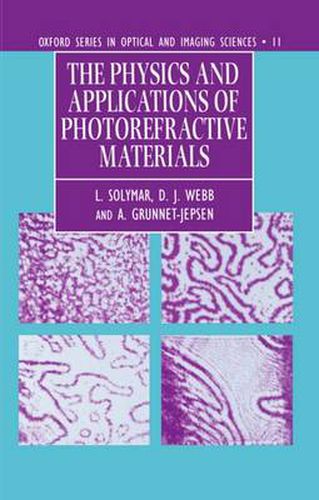Readings Newsletter
Become a Readings Member to make your shopping experience even easier.
Sign in or sign up for free!
You’re not far away from qualifying for FREE standard shipping within Australia
You’ve qualified for FREE standard shipping within Australia
The cart is loading…






Photorefractive materials combine photoconductive and electro-optic properties: light affects their electrical conductivity; their optical properties (refractive index, etc.) are affected by applied electric fields. The aim of this book is to cover the vast range of phenomena occurring in Photorefractive Materials. For Physicists it is part of the fashionable subject of Nonlinear Optics. Engineers tend to place it as part of optoelectronics promising a variety of new devices. This book summarizes the results of 28 years of research in a manner that would appeal both to the beginner (a graduate student who has just entered the field) and to the expert (who might have done research on some aspect of the subject for a decade or more). It is in three parts. Part I serves as an introduction with emphasis on physical principles and simple mathematical models. Part II is a comprehensive account of all the major advances. Its main merit is the organization of the material accompanied by a detailed list of references. Part III is concerned with the enormous range of potential applications.
$9.00 standard shipping within Australia
FREE standard shipping within Australia for orders over $100.00
Express & International shipping calculated at checkout
Photorefractive materials combine photoconductive and electro-optic properties: light affects their electrical conductivity; their optical properties (refractive index, etc.) are affected by applied electric fields. The aim of this book is to cover the vast range of phenomena occurring in Photorefractive Materials. For Physicists it is part of the fashionable subject of Nonlinear Optics. Engineers tend to place it as part of optoelectronics promising a variety of new devices. This book summarizes the results of 28 years of research in a manner that would appeal both to the beginner (a graduate student who has just entered the field) and to the expert (who might have done research on some aspect of the subject for a decade or more). It is in three parts. Part I serves as an introduction with emphasis on physical principles and simple mathematical models. Part II is a comprehensive account of all the major advances. Its main merit is the organization of the material accompanied by a detailed list of references. Part III is concerned with the enormous range of potential applications.